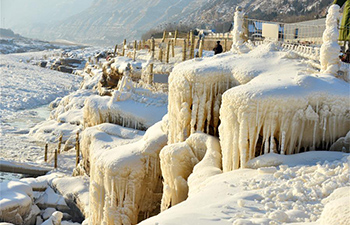WASHINGTON, Jan. 18 (Xinhua) -- Last year was among the three warmest years since modern record-keeping began in 1880, according to reports published Thursday by two U.S. government agencies.
Earth's global surface temperatures in 2017 ranked as the second warmest on record, says an analysis by the U.S. space agency NASA.
Continuing the planet's long-term warming trend, globally averaged temperatures in 2017 were 1.62 degrees Fahrenheit (0.90 degrees Celsius) warmer than the 1951 to 1980 average, NASA's report says.
Even without an El Nino event and with a La Nina starting in the later months of 2017, last year's temperatures ranked between 2015 and 2016 in NASA's records. A warming El Nino event was in effect for most of 2015 and the first four months of 2016.
In a separate, independent analysis, scientists at the U.S. National Oceanic and Atmospheric Administration (NOAA) concluded that 2017 was the third-warmest year in their record.
In NOAA's report, during 2017, the average temperature across global land and ocean surfaces was 1.51 degrees Fahrenheit (0.84 degrees Celsius) above the 20th century average. This was the third highest among all years in the 1880-2017 record, behind the warmest 2016 and the second warmest 2015.
Analyses from the United Kingdom Metereological Office and the World Meteorological Organization also ranked 2017 among the top three warmest years on record.
2017 marks the 41st consecutive year since 1977 with global land and ocean temperatures at least nominally above the 20th century average, according to NOAA.
Trends in the decline of Arctic sea ice extent continued in 2017, NOAA's report says. According to the averaging monthly data from the U.S. National Snow and Ice Data Center, the average annual sea ice extent in the Arctic was the second smallest in the 1979-2017 record.
The annual Antarctic sea ice extent was record small for last year at 4.11 million square miles (about 10.64 million square kilometers), the report says.

















